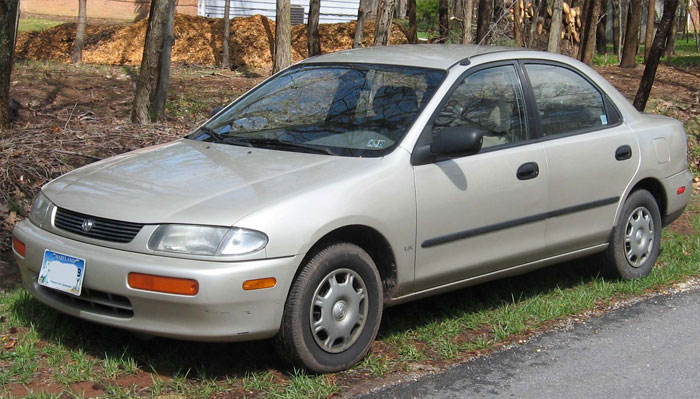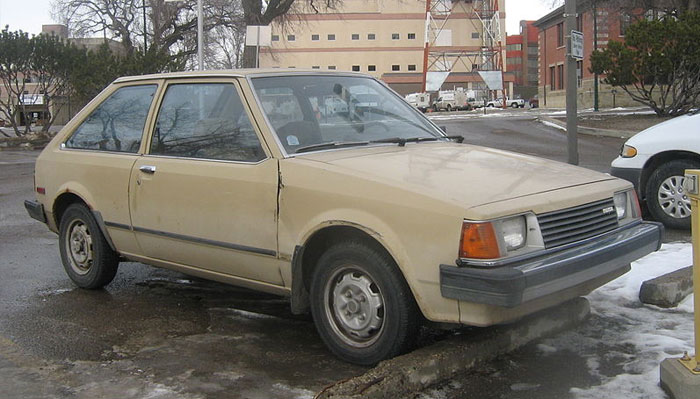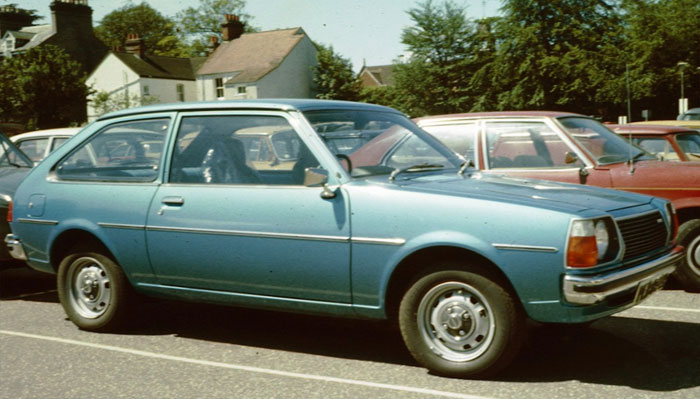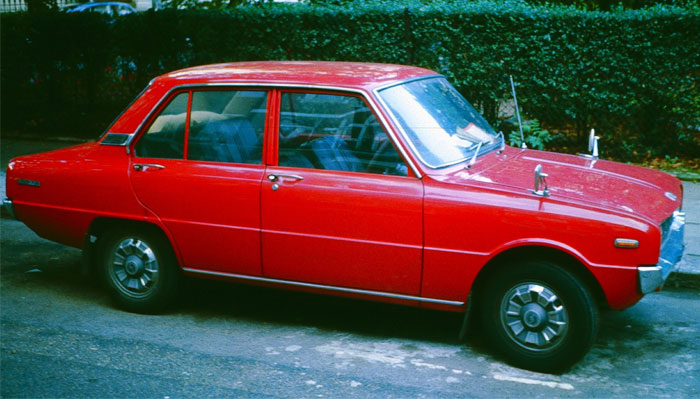Used 323 Vehicles
We Currently Have No Vehicles Matching Your Criteria
Please try again using the search box on the left or return to the Home Page.
Not seeing the car you’re looking for? Take a look at our available Mazda 323 alternatives: Used Mercedes A Class, Kia Rio for sale or used Honda Ballade
Used Mazda 323 for Sale
The Used Mazda 323 For Sale in South Africa have all proven to be very popular thanks to their reliable build and fuel economy. They were a familiar sight on South African roads when the second generation 323 was released here in 1967 right up until the model was discontinued in 2003 and replaced with the Mazda3. The Mazda 323 is one of the cars that launched the hatchback onto our roads back in the day, and its iconic status makes it much sought after. If you are looking for one of these rare cars, please contact your nearest Group1 Cars dealership to see if they can help you.
The History of the Mazda 323 in South Africa
Eighth Generation Mazda 323
|
|
|---|---|
|
The 8th and final iteration of the Mazda 323 was launched on the 9th of June 1998. It, like all other 323 generations before, was an instant hit with the driving public and has become synonymous with the 323 brand name ever since. This version of the 323 underwent a major facelift in 2001, which not only saw the introduction of a new body style, but also the inclusion of a new suspension system, a new entertainment system, and a number of different engine options. This version of the 323 is still being produced today, although be it under the FAW Haima Family Sedan name, in China which is a testament to the longevity of this amazing brand. Did You Know? Until 2016/17 this version of the Mazda 323 was used as a Fast Response Car (FRC) by the Singapore Police Force. These were the main patrol cars used by this police force and have a reputation for proven reliability, safety, speed and fuel economy. |
|
Eighth Generation Mazda 323 at a Glance |
|
 |
|
Power TrainEngine
Transmission
|
Assembled In
|
Bodystyle
|
|
Layout
|
|
Also Known As
|
|
Seventh Generation Mazda 323
|
|
|---|---|
|
Released for sale towards the end of 1994, and in continuous production until the middle of June 1998, the seventh generation of Mazda 323 to go on sale was known as the Mazda Mazda Étude in South Africa. During this 323 generation, a five-door hatchback and four-door sedan were released with revised styling that included pillarless doors and a distinct sheet metal finish. It was called the Mazda 323 Astina and was the face of the Mazda 323 brand during the mid to late 1990’s. Did You Know? The Mazda 323 Astina sold in South Africa, Australia and New Zeland was designed by former Porsche designers. This contributed to the sporty good looks that the car became known for, and although rare today, it is still a much sort after pre-owned vehicle. |
|
Seventh Generation Mazda 323 at a Glance |
|
 |
|
Power TrainEngine
Transmission
|
Assembled In
|
Body Style
|
|
Layout
|
|
Also Known As
|
|
Sixth Generation Mazda 323
|
|
|---|---|
|
The sixth generation of Mazda 323 was sold as the Ford Lazor in South Africa. For more information about the Ford Lazor please keep an eye out for an article about this popular Ford Car on our used car blog. |
|
Sixth Generation Mazda 323 at a Glance |
|
 |
Fifth Generation Mazda 323
|
|
|---|---|
|
Known as the “Midge”, the “Sting”, and as the “Ford Tonic” in South Africa, the Mazda 323 of this generation was only sold under the 323 brand name for a short period of its production run. Additionally, there was a South African produced bakkie based on the 323 called the Ford Rustler, which later became known as the Ford Bantam. Both of these bakkies became synonymous with the Ford brand and are not remembered in South Africa as a Mazda product. Mazda 323’s were produced in South Africa at this time, with most of the 5th generation Mazda 323’s assembled in South Africa being exported to Australia between 1989 and 1991. Small styling and design changes were incorporated to make them more compliant to Australian vehicle regulations. Did You Know? This version of the Mazda 323 remained in production in South Africa until 2003. It was sold as an entry-level car and proved to be extremely popular in the lower end of the South African car market. |
|
Fifth Generation Mazda 323 at a Glance |
|
 |
|
Power TrainEngine
Transmission
|
Assembled In
|
Body Style
|
|
Layout
|
|
Also Known As
|
|
Fourth Generation Mazda 323
|
|
|---|---|
|
This version of the 323 was first seen on 2 June 1980 and went on sale shortly afterwards. This was a completely new car for Mazda and was unlike anything that they had manufactured and designed thus far. It was Mazda’s first front-engine, front-wheel drive subcompact car and at launch, it was made available in both a hatchback and a sedan model. This was the first Mazda model to be designed with input from the American Ford company, which from 1979 onwards had owned a major stake in the Mazda Motor Corporation. At its introduction, it was immediately nominated for and won the first Car of the Year Award in Japan. Did You Know? This version of the Mazda 323 was the first to have a ”twin” badged under a different brand and vehicle name. This was the Ford Lazer and its four-door sedan cousin the Ford Meteor. |
|
Fourth Generation Mazda 323 at a Glance |
|
 |
|
Power TrainEngine
Transmission
|
Assembled In
|
Body Style
|
|
Layout
|
|
Also Known As
|
|
Third Generation Mazda 323
|
|
|---|---|
|
The Mazda 323 GLC was launched across the globe in January 1977 to much fanfare. The five-door 323 proved an immediate success in South Africa, and with the growing demand, a number of vehicle variants were introduced. This included the introduction of a more powerful engine which became the standard for the third generation 323 in S.A. from 1978 onwards. Additional trim levels were also introduced, including a Special Edition and a CS model. A facelift in 1978 also saw the release of the 323 GLC DeLuxe Model, as well as the release of a 1600cc engine option. Did You Know? The GLC in the name stood for “Great Little Car” and this certainly was the case in South Africa. In fact, the 323 proved to be so popular that a rotary-engined 323 was a regular feature in the South African national rally championships of the time. |
|
Third Generation Mazda 323 at a Glance |
|
 |
|
Power TrainEngine
Transmission
|
Assembled In
|
Body Style
|
|
Layout
|
|
Also Known As
|
|
Second Generation Mazda 323
|
|
|---|---|
|
Almost identical from a mechanical perspective to the first generation 323, this was the version of the 323 that was first sold in South Africa. It was also sold as a small utility bakkie in South Africa called the Mazda F-1000 and the Mazda F-1300. This vehicle was built with very few changes continuously from its introduction in the early 1970’s until its discontinuation in 1991. Did You Know? This 323 and the 323 generation before it are seen as two of the cars that helped to turn Hiroshima around after World War 2. Mazda’s factory and headquarters are to this day still situated in the city of Hiroshima, which as we all know was completely destroyed when the first atomic bomb ever used in anger was dropped on it on August 6, 1945, at 8:15 a.m. |
|
Second Generation Mazda 323 at a Glance |
|
 |
|
Power TrainEngine
Transmission
|
Assembled In
|
Body Style
|
|
Layout
|
|
Also Known As
|
|
Please Note! The first generation Mazda 323 was not sold in South Africa, and for this reason, has not been included in our South African History of the Mazda 323.
Mazda 323 FAQ’s
Q: What was the most popular 323 model?
A: The fifth and fourth generations were two of the most popular models ever sold in South Africa. These covered the year models between 1980 and 1989. All subsequent 323 models also helped achieve numerous sales records across the globe as well as here in South Africa.
Q: What was the last Mazda 323 model sold?
A: The 2003 Mazda 323 Facelift model was the final model sold in South Africa. In the Far East, production and sales of the 323 continued under the Ford brand name until 2008. In China, there is still an identical version of the last generation 323 in production to this day called the Haima Family.
Q: When was the Mazda 323 discontinued in South Africa?
A: The Mazda 323 was officially discontinued in 2003 and replaced by the Mazda3. It has proven to still be a popular pre-owned vehicle to this day.
Q: What Mazda 323 models are still available?
A: The vast majority of Used 323’s still for sale come from the eighth and final generation of vehicles. This includes all 1998, 1999, 2000, 2001, 2002 and 2003 year models. From time to time there are older models that are made available for sale, but they are rare.
Used Mazda 323 Prices
The Mazda 323 was discontinued in 2003, which means that there are currently no new or nearly new models to choose from. However, due to their reliability and rugged Mazda build quality there are still often final generation models available to purchase from time to time. The Prices of Used Mazda 323 Models are determined using the current 323 Book Value, which can be influenced by the following factors:
- The Generation and Year Model
- The Trim Level of the relevant 323 vehicle generation being sold
- The Body and Mechanical Condition of the 323
- The Mileage
- The type of 323 being sold (4-door sedan or 5-door hatchback)
All of the Used Mazda 323 Prices for the vehicle in stock on our showroom floor are available on this website.
Used Mazda 323 for Sale in Cape Town
Kuils River and Stellenbosch are home to two of our showrooms that offer Used Mazda 323 for Sale in Cape Town, while our third showroom in the Western Cape is situated in Knysna.
Group1 Pre-Owned Kuils River
Tel: 021 900 5200
Group1 Cars Stellenbosch
Tel: 021 201 1867
Group1 Cars Kuils River
Tel: 021 903 0500
Group1 Cars Strand
Tel: 021 891 2866
Group1 Cars George
Tel: 044 008 5041
Group1 Cars Knysna
Tel: 044 302 2600
Used Mazda 323 in Johannesburg
You can still sometimes find a quality Used Mazda 323 for Sale in Johannesburg at one of three Group1 Pre-owned Showrooms in Gauteng:
Group1 Cars Midrand
Tel: 087 057 9788
Group1 Cars Alberton
Tel: 010 593 4393
Group1 Pre-Owned Gleneagles
Tel: 011 210 7600
Used Mazda 323 for Sale in Uitenhage
If you’re looking for a used Mazda 323 for sale in Port Elizabeth – our Uitenhage showroom may be able to assist.
Group1 Cars Uitenhage
Tel: 041 994 1800
Image Source: Wikipedia

